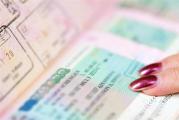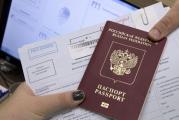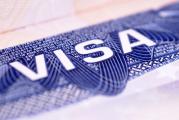What is the difference between a national visa and a Schengen visa?
Some Russians, Ukrainians and Belarusians, especially those living in villages and small towns, being sure that milk rivers flow in the fabulous “abroad”, bordered by kissel banks, want to find work there. Many succeed, and some even manage to open their own business in the Schengen area.
This suggests that a person has to travel to Europe quite often.
Detailed map of the Schengen area showing all countries
A national visa will help him avoid unnecessary problems and misunderstandings at the border.
Many travelers are interested in the question of how a Schengen visa differs from a national one. The main difference between a national visa and a Schengen visa is that in the second case, a person has the opportunity to freely stay and live in the territory of the Schengen countries for the entire duration of the visa. And he does not need to comply with the rule of finding 90 days within half a year, which are valid for holders.
On a national visa category D, he can stay for a whole year in the country that issued it.
It looks like a Schengen visa to Poland
A national D visa can only be issued to visit one country. However, the owner has the right to stay in the Schengen zone for 90 days. Another difference between a national visa and a Schengen visa is that it is issued for a longer period and implies employment or training in one or another European country.
It is important to take into account that a student can be issued a national visa for studying, which involves transit travel to the place of study no more than once.
In order to return home, a person has to. If a student ignores this requirement and still tries to drive back on a national visa document, he may face serious troubles such as deportation and subsequent ban on obtaining Schengen visas.
Grounds for extradition
A national visa type "D" can be issued:
Example of a national German visa
- Persons studying abroad.
- Persons engaged in labor activities abroad (having their own business or business trip).
- Individuals who wish to be reunited with their spouses.
- Persons participating in a sporting event.
- Persons participating in a cultural event.
An important nuance
Some people whose activities involve occasional travel abroad often confuse a long-term national visa with a short-term multiple-entry visa type "C".
This type of visa can be either one-day or five-year. It allows the traveler to stay in the Schengen area strictly ninety days every six months.
Deciphering the designations on the Schengen visa
In contrast to it, a visa type "D" involves:
- Staying on the territory of the main state for more than ninety days in six months (most often, a 12-month visa document is issued to the applicant).
- Free movement within the territory of other Schengen states (three out of six months).
It is noteworthy that this type of national visa has a status similar to . Unfortunately, despite the fact that twenty-four months have already passed, not all customs officers are aware of these changes.
Therefore, the traveler should always be ready to give appropriate explanations and document them.
Pros of the document
This type of national visa has a considerable number of advantages. Among the main advantages it should be noted:
- obtaining the right to conduct business (if there is an appropriate permit);
- obtaining the right to stay in other states of the Schengen zone (up to three months within six months);
- obtaining the right of unlimited border crossing with the states of the Schengen zone.
Another plus is the democratic cost of this visa document.
Document flaws
Nothing is perfect, as you know, and the national visa document is no exception. Its disadvantages include the following points:

Features of issuing a visa document
A national visa involves a fairly democratic procedure for registration. Documents are usually accepted on weekdays, from nine in the morning to noon. There is no need to pre-register and stand in line. This type of visa can be single or multiple entry.
Documents for single entry visa
A national visa can be issued if the following documents are available:
- Foreign passport with 2 blank pages (it is extremely important that this document is not expired).
- Questionnaires-applications for the issuance of the relevant document.
- Certificate confirming the relevance of medical insurance with a coverage amount exceeding 5792 European rubles.
An example of an insurance policy for obtaining a Schengen visa
The applicant also undertakes to provide a high-quality photograph, which would have been taken no earlier than six months before the issuance of a visa document.
Documents for multiple entry visa
Making a multiple visa document type "D" is not much different from the procedure relevant for obtaining its single counterpart.
In order to receive this document, the applicant undertakes to submit the following certificates:
- A valid international passport containing at least two blank pages for affixing visas.
- Application form (filled in strictly in Latin).
- A document certifying the availability of medical insurance with a coverage amount of more than five thousand European rubles.
- Fresh and high quality photography.
In addition, the applicant undertakes to submit a certificate confirming that there is a sufficient amount of money in the account. These funds should be sufficient both for living in the territory of the country of entry and for returning home.
Sample multiple entry national visa to Italy
A current certificate can be issued in Russian and translated into English, as well as into the language of the country of entry.
Some categories of citizens will have to submit to the specialists of the consular office the petition of the inviting party. This requirement is relevant for:
- Students who arrived to receive education under one of the existing programs.
- Students who arrived to receive education in one of the higher schools.
- Professional athletes and their families.
- Professional trainers and their families.
- Foreigners who arrived in one of the countries of the Schengen zone for the purpose of carrying out labor activities.
- Highly qualified specialists who arrived at the invitation and their families.
- Accredited media representatives.
It is important to take into account that the application-invitation for students, which is necessary for obtaining a visa type "D", can also be sent by e-mail. 
At the same time, employees of a diplomatic institution may be asked to present a paper version of the document. Diplomats may also require the presentation of any other document, without which the issuance of a type D visa document is impossible.




